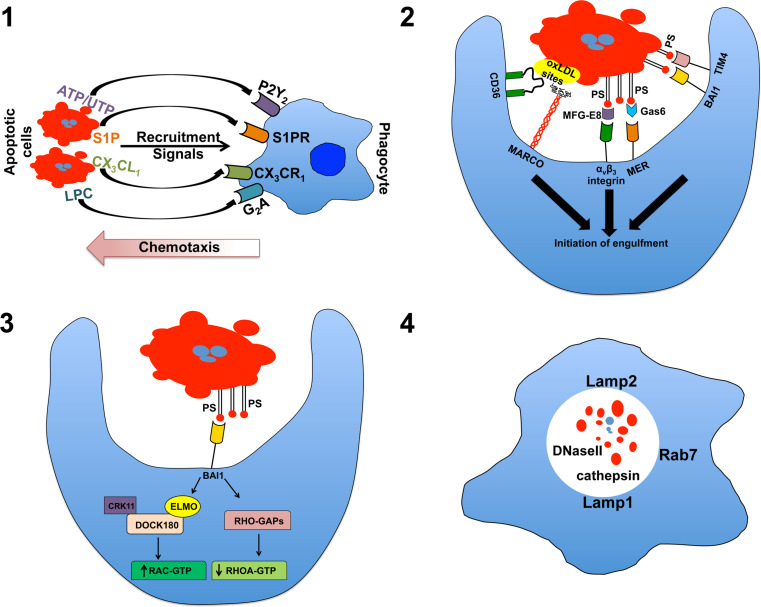Fig. 1.
The four steps in efferocytosis. 1 In the “find me” stage, cellular commitment to apoptosis results in the production/release of chemotactic agents that recruit and, perhaps, activate local phagocytes priming them for phagocytic uptake of the cellular corpse. 2 During the “tickle me” stage, phagocytes encountering dying cells interact by a variety of receptors that can directly or indirectly (via bridging molecules) recognize exposure of native and modified forms of the membrane-integral lipid phosphatidylserine (PS) or other exposed, modified self-constitutions (the example shown here is MARCO and CD36-binding modified lipoproteins). 3 During the “eat me” stage, proper ligand/receptor engagement activates downstream signal transduction activating ELMO and Rac-dependent cytoskeletal changes resulting in plasma membrane invagination and internalization of the apoptotic cell. 4 During the “process me” phase, the apoptotic cell is degraded in Lamp+ lysosomes allowing for repurposing of the apoptotic material for antigen presentation and elicitation of adaptive, tolerogenic immunity. oxLDL oxidized low-density lipoprotein

